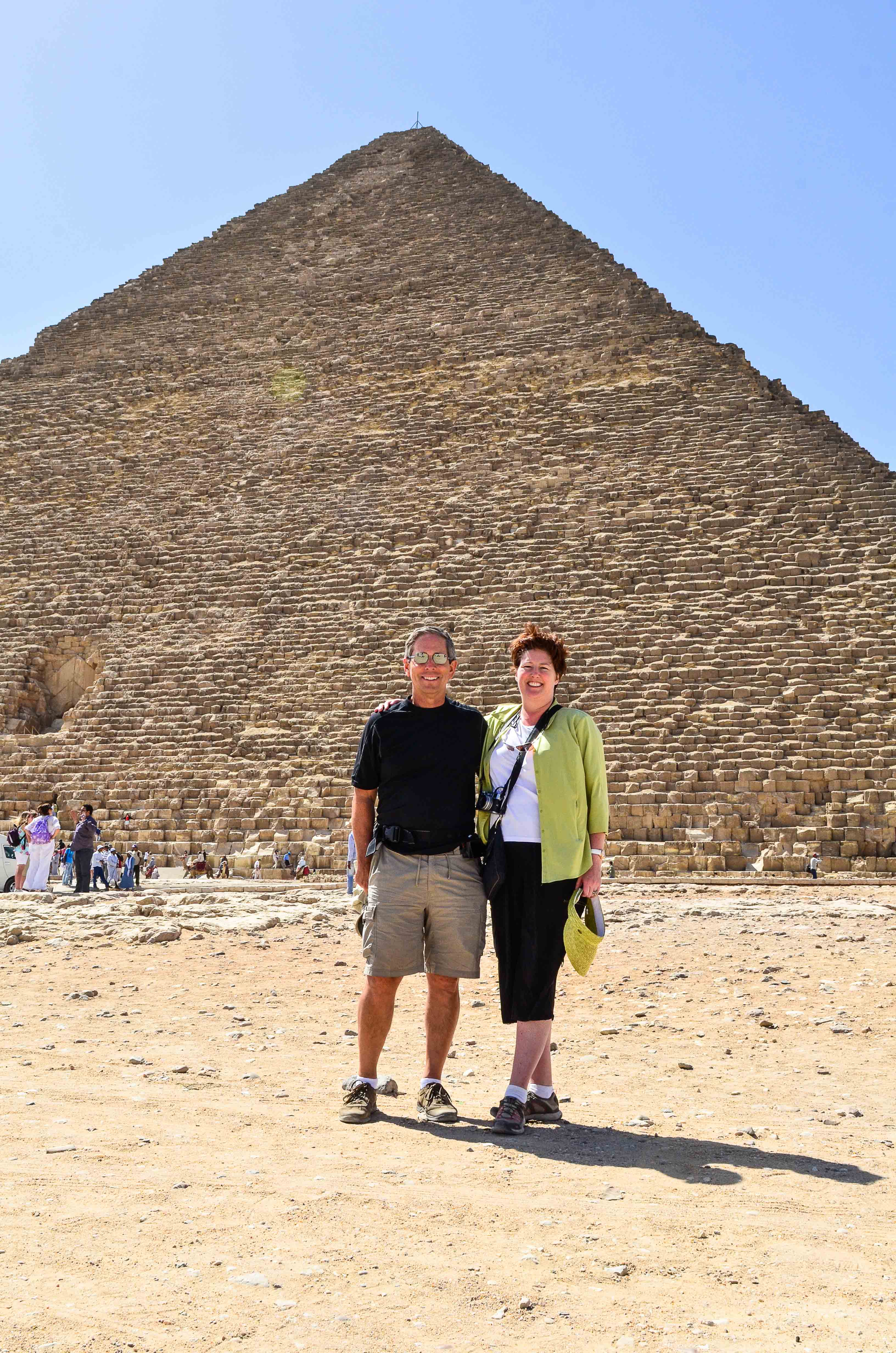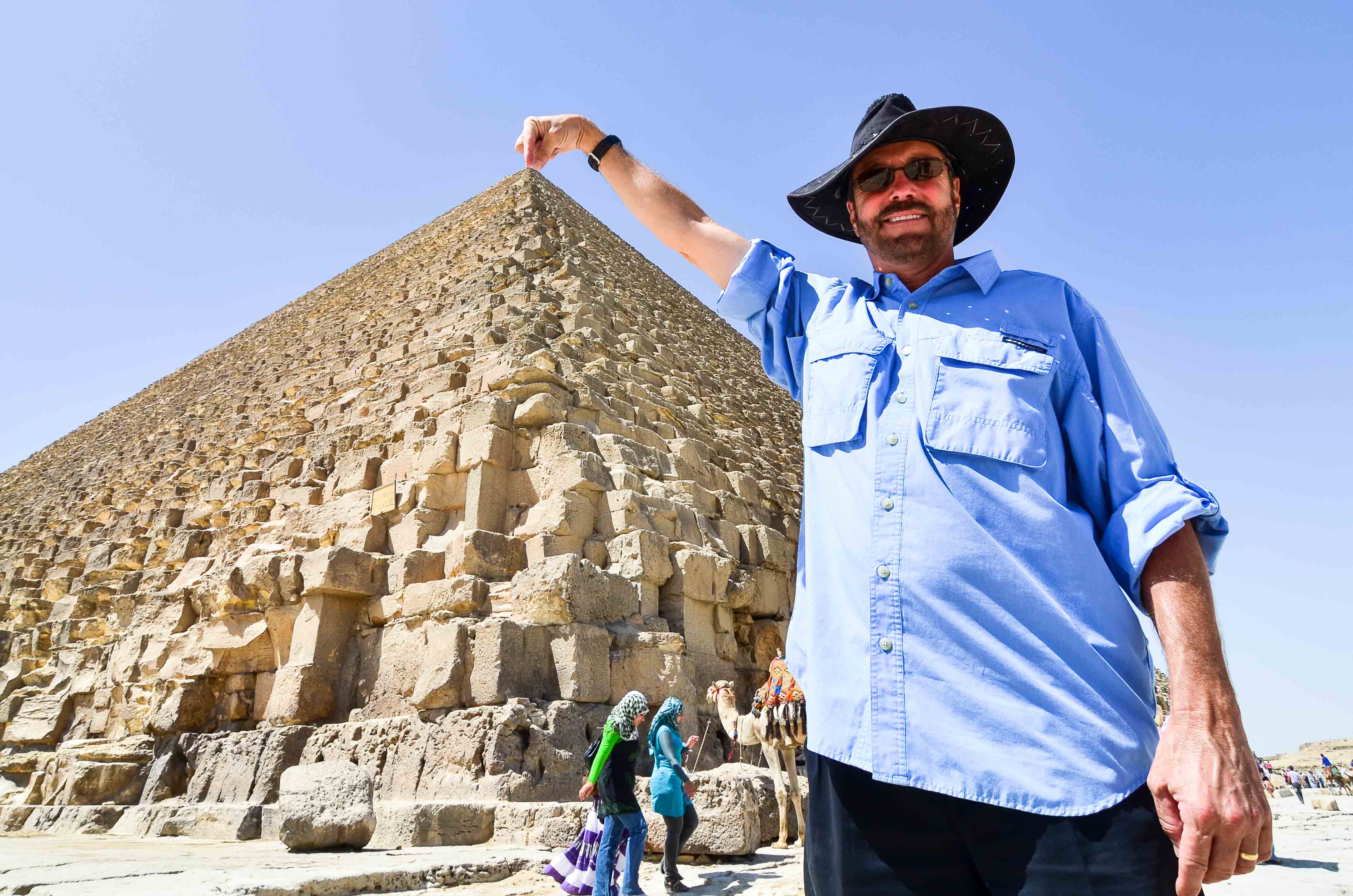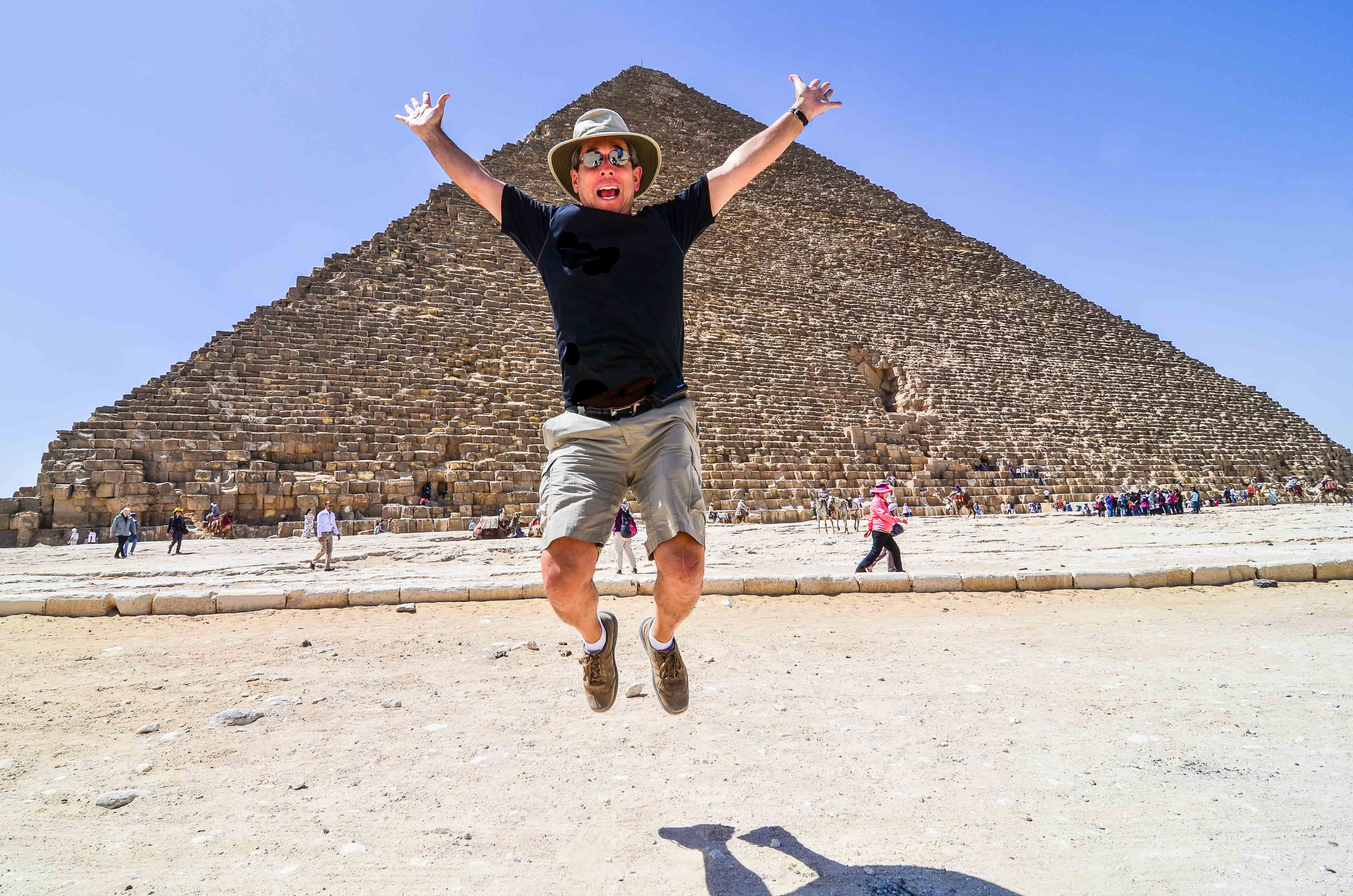We are back in Egypt today and ready for another long day off of the ship. Almost everyone on the ship is getting off this morning and there were long lines to get our tour tickets as well as to disembark the ship.
Paul and Kathy had a private tour again today and had asked if we wanted to join them. We had already bought tickets to go on the “Classical Cairo” bus tour with about 200 other guests…but when we saw the gaggle of people and learned that their mini-bus had plenty of room for us, we bailed on the bus and opted for another adventure with Paul and Kathy!
Here are the Top Pictures for Cairo:
Click here for the detailed Picture Gallery for Cairo.With a population of approx. 7 million spread over 175 sq miles, Cairo is by far the largest city in Egypt. With an additional 10 million inhabitants just outside the city, Cairo is the center of the largest metropolitan area in Africa and the eleventh-largest urban area in the world.
While Cairo’s economy was ranked first in the Middle East, they have suffered lately due to the political unrest in this area. Our guide, Usama, told us that tourism is down 80% from last year. Even though tourism is down, the traffic in the city was still intense.
We started our tour with a 2 ½ hour drive from the Port of Suez to downtown Cairo and the pyramids! The Giza Necropolis includes the Great Pyramid of Giza, which is one of the oldest and largest of pyramids in Egypt, as well as 8 other pyramids.
The Great Pyramid is the oldest of the Seven Wonders of the Ancient World, and the only one to remain largely intact. Egyptologists believe that the pyramid was built as a tomb for fourth dynasty Egyptian Pharaoh Khufu over a 20-year period concluding around 2,560 BC.
The Great Pyramid was the tallest man-made structure in the world for over 3,800 years. Originally, casing stones that formed a smooth outer surface covered this Pyramid; what is seen today is the underlying core structure.
It consists of approximately 2.3 million limestone blocks weighing 2-80 tons each! Historians believe that the blocks were transported from nearby quarries. The Tura limestone used for the original exterior casing was quarried across the river. The largest granite stones in the pyramid, found in the “King’s” chamber, weigh 25 to 80 tons and were transported from Aswan, more than 500 miles away.
Traditionally, ancient Egyptians cut stone blocks by hammering wooden wedges into the stone, which were then soaked with water. As the water was absorbed, the wedges expanded, causing the rock to crack. Once they were cut, they were carried by boat either up or down the Nile River to the pyramid. It is estimated that 5.5 million tons of limestone, 8,000 tons of granite (imported from Aswan), and 500,000 tons of mortar were used in the construction of the Great Pyramid.
There is a LOT of information on the Great Pyramid that you can find online so I won’t go into any more detail here…but needless to say, it’s massive and a real thrill to see in person.
There area around the Great Pyramid, known as the Giza Necropolis, is a complex of ancient monuments including three pyramid complexes known as the Great Pyramids, the massive sculpture known as the Great Sphinx, several cemeteries, a workers’ village and an industrial complex. It is located 5 miles inland into the desert from the old town of Giza on the Nile, approximately 15 miles southwest of Cairo city center.
The weather was nice today, except for a strong breeze that not only made our hats blow off, but also blew sand in our eyes. Paul and Kathy took a camel ride and Dale and I watched and took pictures and videos. I am still apprehensive about getting on a Camel…they get down on their knees so you can climb on, and then, when they get up it is a rocky ride!
After visiting the various Pyramids and the Sphinx, we went to lunch at a nearby hotel and planned our afternoon. Paul, the shopper, wanted to go shopping (go figure) and Dale, Kathy and I wanted to go to the Egyptian Museum to see, among other things, the contents of King Tut’s tomb.
So we decided that we would drop Paul off at the market area and head over to the museum. Dropping Paul off turned out to be a bigger effort than originally expected…the traffic was thick so it was slow moving.
The tour guide was concerned about leaving him, but they verified that they had each other’s cell phone numbers and we left him in an area of town that I wasn’t even comfortable driving through, never mind shopping in.
On our drive to the museum we passed the Citadel and the Mohammad Ali Mosque. Situated on the summit of the citadel, this Ottoman mosque, the largest to be built in the first half of the 19th century, is, with its animated silhouette and twin minarets, the most visible mosque in Cairo. The mosque was built in memory of Tusun Pasha, Muhammad Ali’s oldest son, who died in 1816.
This mosque, along with the citadel, is one of the landmarks and tourist attractions of Cairo and is one of the first features to be seen when approaching the city.
Twenty-five minutes later we were at the Egyptian Museum and had a quick visit. The Egyptian Museum contains many important pieces of ancient Egyptian history. It houses the world’s largest collection of Pharaonic antiquities, and many treasures of King Tut.
The Tut exhibit was fantastic. The details on his coffin, his jewelry and the precision involved in building the complicated burial pieces was incredible. Tut’s tomb contained four gilded shrines nested one inside the other in order of decreasing size. Inside the innermost shrine was a red quartzite sarcophagus which protected three anthropoid coffins (man-shaped). The first two coffins were made of gilded wood but the final coffin was made of solid gold. The solid gold coffin housed the mummy of King Tut and his fabulous golden death mask. We got to see all of this, including his actual tomb and mummy when we were in Luxor at the Valley of the Kings.
During the Egyptian Revolution of 2011, the museum was broken into, and two mummies were damaged and several other artifacts were destroyed. Also during that time the ruling party headquarters building next door to the museum was set on fire but luckily did not damage the museum. We were shocked when we saw it…the building is huge and right next-door to this important museum.
Back in the van we were off to pick up Paul only there was one problem…Paul’s cell phone didn’t seem to be working. So we headed to the pre-arranged meeting area and waited while the guide continued to try and reach him. After thirty minutes passed we were able to connect with him and he was back in the van a few minutes later. Thank goodness!
The drive back to the port was uneventful and we were surprised to see a huge contingent of the ship’s crew out on the dock waiting to greet us! The band was playing and we were welcomed back in grand style, leaving Egypt behind us, as we get ready to cross through the Suez Canal tomorrow.



.jpg)



Sherrue - Margaret & Dale,
We’re really enjoying your blog and photos. It brings back such fond memories of our last voyage to that part of the world with Pauline & Herb. Can’t believe you did the Donkey’s in Petra. . . you are brave souls.
continue to have fun and travel safe.
Sherrie & Nick
Cheryl - Ok… so I was just complaining about pushing 2 little girls and a stroller with library books weighing about 80 lbs. Hmmm… I guess I’ll have to go back and rethink my complaints! Absolutely Amazing information. Thanks so much… Wish I was there with you both!
Cheryl - I can’t figure out how to leave messages on some of your photos. But… I just am loving all of them. I wonder if your lives will ever be the same after this trip. It must make you look at life differently! 🙂